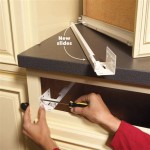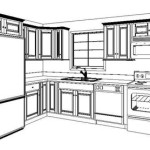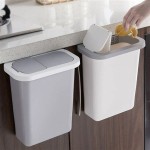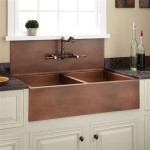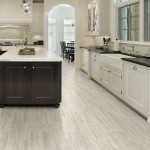Painting Kitchen Cabinets: A Guide to Transforming Non-Wood Surfaces
Updating the look of your kitchen cabinets without replacing them entirely is a savvy way to refresh the space. Painting them can enhance their aesthetics and provide a cost-effective alternative to costly renovations. However, the process can be slightly different if your cabinets are not made of real wood. Here's a comprehensive guide to help you paint non-wood kitchen cabinets successfully.
Step 1: Assess the Cabinet Material
Before you start, determine the material of your cabinets. Common non-wood options include laminate, thermofoil, and melamine. Knowing the material will help you choose the appropriate paint and preparation techniques.
Step 2: Clean and Degrease
Thoroughly clean the cabinets using a strong degreasing cleaner. Remove all dirt, grease, and grime to ensure the paint adheres properly. Use a sponge or cloth and avoid scratching the surface.
Step 3: Sanding (Optional)
For laminate cabinets, light sanding with a fine-grit sandpaper can help remove the glossy finish and create a better bond for the paint. However, do not sand too much or penetrate the laminate layer.
Step 4: Use a Bonding Primer
Non-wood surfaces require a bonding primer to improve paint adhesion. Apply one or two coats of a primer specifically designed for non-wood surfaces, ensuring even coverage.
Step 5: Apply Paint in Thin Coats
Use a high-quality paint designed for cabinets. Apply thin, even coats and allow each coat to dry completely before applying the next. This prevents drips and ensures a smooth finish.
Step 6: Allow Ample Drying Time
After applying all the paint coats, allow ample time for them to cure. Non-wood surfaces may take longer to dry than real wood. Refer to the paint manufacturer's instructions for recommended drying times.
Step 7: Protect with Polyurethane
Once the paint is dry, apply two to three coats of polyurethane finish to protect the surface from wear and tear. Choose a matte, satin, or glossy finish depending on your desired look.
Additional Tips:
- Test the paint and primer on an inconspicuous area first to ensure compatibility and desired results.
- Consider using a spray gun for a more professional and consistent finish.
- Use a brush or foam roller depending on the texture of your cabinet surface.
- Allow the cabinets to fully dry before reattaching doors and hardware.
- Regularly clean and maintain the painted cabinets to preserve their appearance.
Conclusion:
Painting non-wood kitchen cabinets is a feasible DIY project that can transform the look of your kitchen without breaking the bank. By carefully following these steps and using the right products, you can achieve a professional-looking finish that will enhance the functionality and aesthetics of your space for years to come.

How To Paint Laminate Cabinets Without Sanding The Palette Muse

Should I Paint My Kitchen Cabinets Helix Painting

How To Paint Pressed Wood Kitchen Cabinets Choice Cabinet

How To Paint Laminate Cabinets Without Sanding The Palette Muse

Should I Paint My Kitchen Cabinets

Painted Wood Cabinets Vs Stained A Questionnaire Kylie M Interiors

How To Paint Laminate Cabinets Without Sanding The Palette Muse

How To Paint Kitchen Cupboard Doors The Hub

Farmhouse Check In A What We Chose Edition Stained Wood Or Painted Cabinets Emily Henderson

How To Glaze Cabinets At Home With The Barkers
Related Posts

